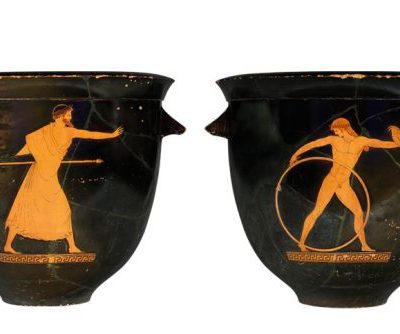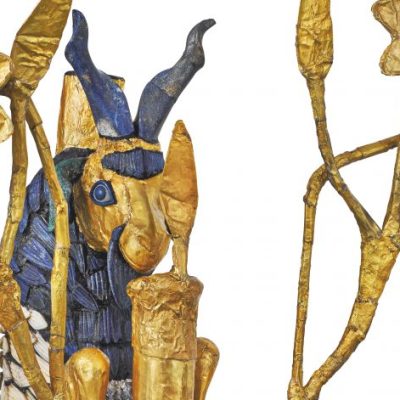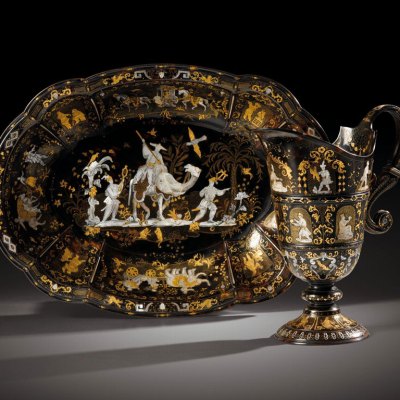When most people think of Siberia, the curators of this glorious exhibition note, they think of an area that is ‘vast, cold and empty’. It is indeed vast; it can be cold. But it is certainly not empty. Siberia is a region of immense historical and cultural significance, but its role in global history is seldom acknowledged or even noted. Part of the problem is that Siberia is home to nomadic peoples, who have dominated the steppes since the beginning of history – and nomads have never had good press. Metropolitan types have always looked down their noses at those who eschew cities, urban life, and ‘civilisation’ – the ravaging Huns, led by Attila or the marauding Mongols under Genghis Khan provide two particularly notorious examples.
Just as Siberia needs rehabilitation, so too do the Eurasian nomads who inhabited the region, whose reputation for violence, chaos, and barbarism is in need of serious correction. The Scythians held sway over the vast steppe lands that stretch from the north of the Black Sea as far as the plains of Mongolia from around 900 BC until after the time of Alexander the Great – 700 years later. Generalising about who is who across this enormous expanse can be not so much treacherous as impossible. Sensibly, therefore, the curators of this exhibition define ‘Scythian’ as those linked by a ‘triad’ of characteristics: weapons, horse harnesses, and animal-style art.
Horse headdress, (late 4th-early 3rd century BC), southern Siberia. State Hermitage Museum, Petersburg. State Hermitage Museum, Petersburg; © Photo: V. Terebinin; © The State Hermitage Museum
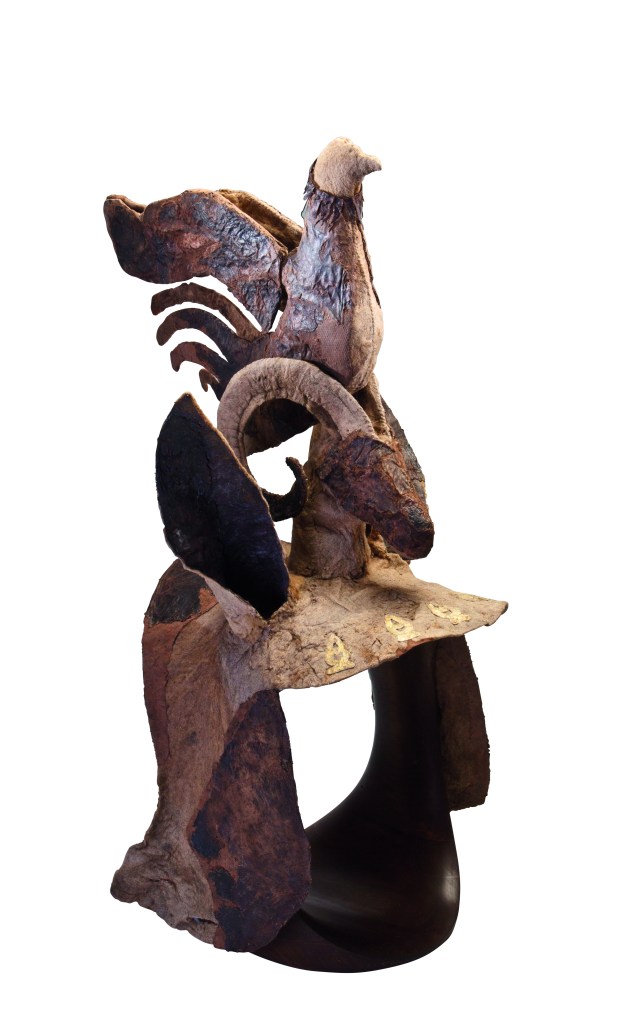
For most visitors, the results will be a revelation. The show consists of around 200 exquisite objects, many fashioned out of gold, including belt buckles depicting hunting scenes, including my own favourite – a vulture mauling a yak and a tiger. There are fabrics that are more than 2,000 years old, as well as leather purses, sable fur pouches, fake beards and, almost unbelievably, a bag containing lumps of cheese made from cow, sheep, goat, or yak’s milk (analyses so far have been inconclusive).
These nomads did not just live on the land; they had to live in harmony with it – animal husbandry and marshalling water and food sources were matters of life and death. Sustainability may sound like a modern concept, one we should understand better in the 21st century at a time of rising climate pressure; it was well understood by the Scythians many moons ago.
Gold plaque depicting a Scythian rider with a spear in his right hand, (second half of the 4th century BC), Kul’ Oba. State Hermitage Museum, St Petersburg. Photo: V. Terebenin; © State Hermitage Museum
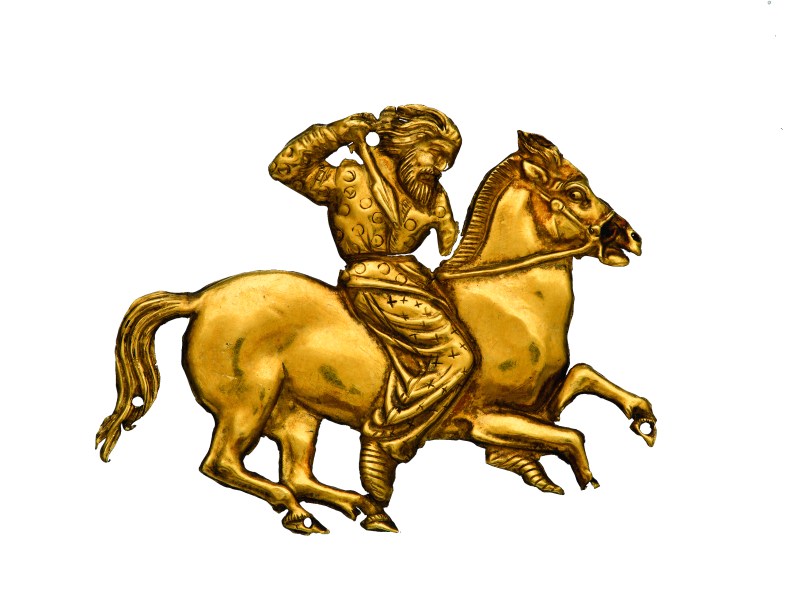
While ancient authors (and more modern commentators) often draw attention to the apparent barbarism of the nomadic peoples, Herodotus was spot on when he noted in Book IV of the Histories that, above all else, the Scythians were consummate survivors. Their greatest ability, he wrote, was that they ‘have managed one thing, and that is the most important in human affairs, better than anyone else on the face of the earth: I mean their own preservation.’ They could certainly look after themselves; Herodotus also wrote, ‘No one who invades their country can escape destruction.’ That speaks volumes not only about their determination but also organisation and sophistication.
This is more than amply shown from the contents of the mysterious burial mounds dotted across Siberia and the northern parts of Central Asia. In the early 18th century these caught the attention of Peter the Great, who sent scientific expeditions to inspect the new territories that were brought under Russian control at that time. The Tsar issued instructions that ‘drawings of everything that is found’ should be made and that anything ‘very old and uncommon’ be shipped back to St Petersburg. The exhibition contains an important additional dimension of revealing much about Russian interest in the new worlds that were being encountered and about early efforts to make sense of them.
The peoples of the Eurasian steppe in antiquity, like their modern successors, were always in close contact with sedentary, urbanised societies. The latter have traditionally depended on pastoralists with flocks of animals to supply invaluable sources of transportation, meat and also military muscle: cavalry need to get horses from somewhere, and those bred on the steppes were in high demand from China to Persia to South Asia. This led to extensive interaction that belies the idea of nomads as outsiders or as violent and unreliable peoples that we get from so many written sources. Among the objects shown here, therefore, are drinking cups from Athens, cauldrons decorated in distinctive Greek style and an amphora from the Aegean: these Scythians were at the centre of intercontinental trade and exchange in the ancient world.
Cauldron with loop handle and Greek decoration, (375–325 BC), Dnieper river region, northern Black Sea. State Hermitage Museum, St Petersburg Photo: © V. Terebenin; © State Hermitage Museum
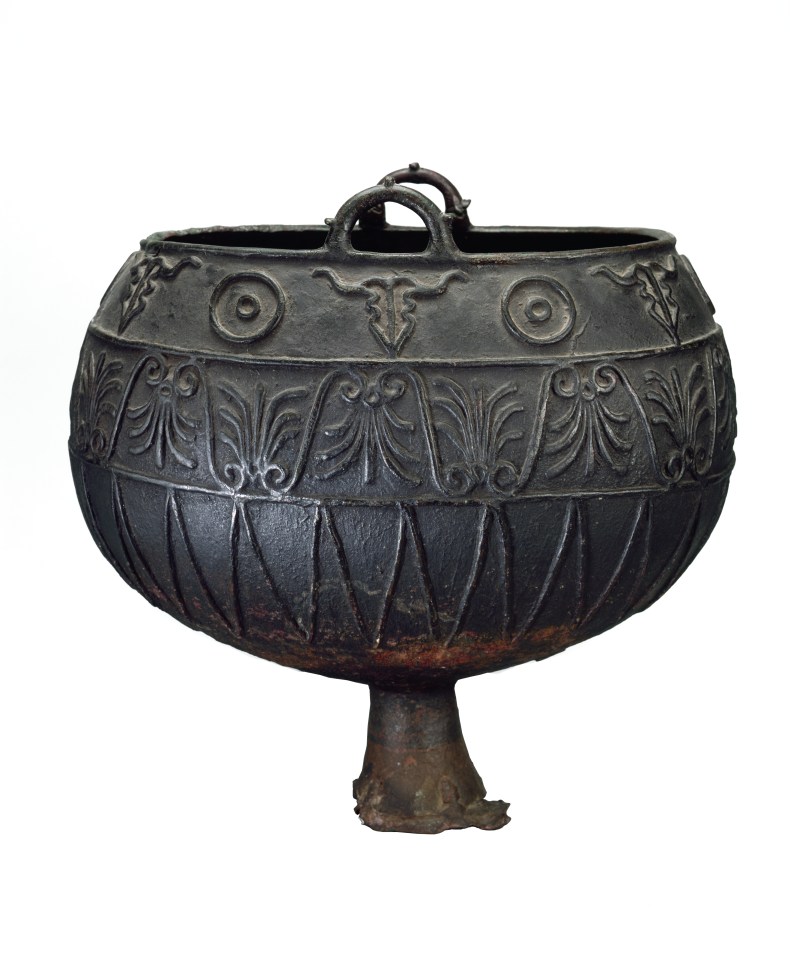
Their importance can be seen from the famous Persian inscription at Bisitun in western Iran, where Darius I (who did not mess around) took great pleasure in showing off about how he had defeated the Scythians ‘utterly’ – perhaps not quite fake news, but certainly putting something of a gloss on things. Nevertheless, the fact that the mighty Persian Great King thought it was worth commemorating his success against the nomads is striking. So too is an extraordinary clay tablet with a cuneiform inscription dating to the 7th century BC that concerns a request for a marriage alliance between the Scythians and the ruler of the Assyrian emperor. That the request appears to have been granted says much about the prestige and status of the nomadic peoples and their importance beyond their own territories.
The British Museum deserves great credit for putting on a show that challenges preconceptions and the curators a round of applause for setting a new standard for cooperation with institutions in Russia and Central Asia (something that is not always easy, particularly at the moment). There are not too many exhibitions that can be truly described as a ‘once in a generation’ opportunity to encounter a world that seldom gets much attention – and then to do so in a way that transforms how we understand the past. This is one of them.
‘Scythians: Warriors of Ancient Siberia’ is at the British Museum, London, until 18 January 2018.
From the December issue of Apollo. Preview and subscribe here.

